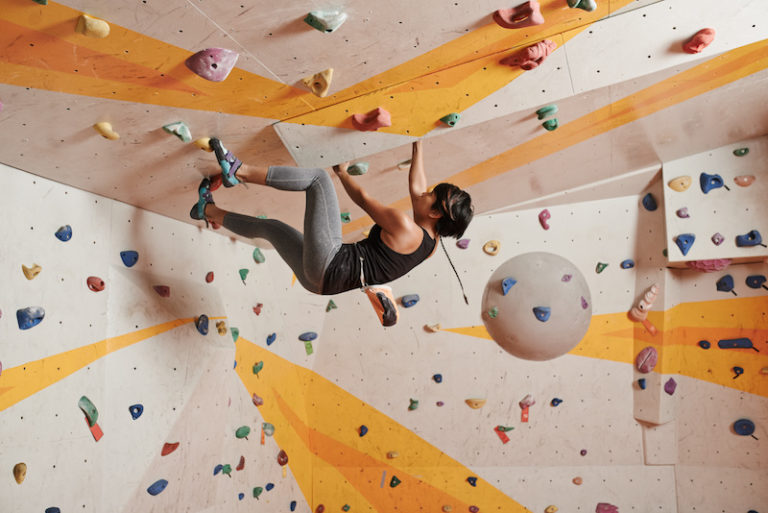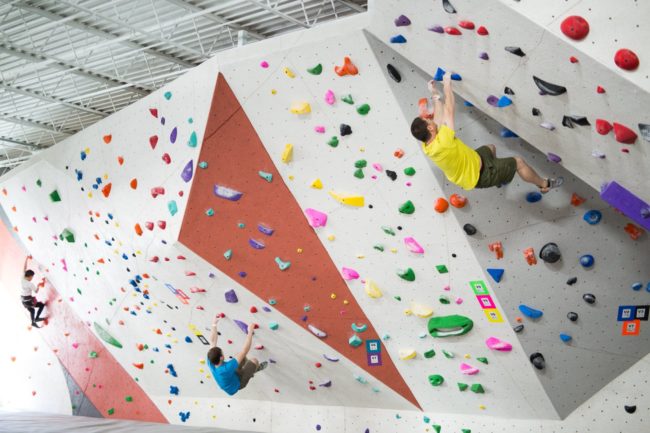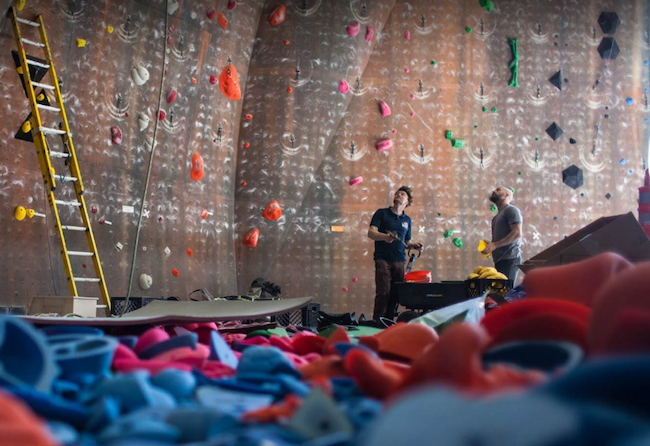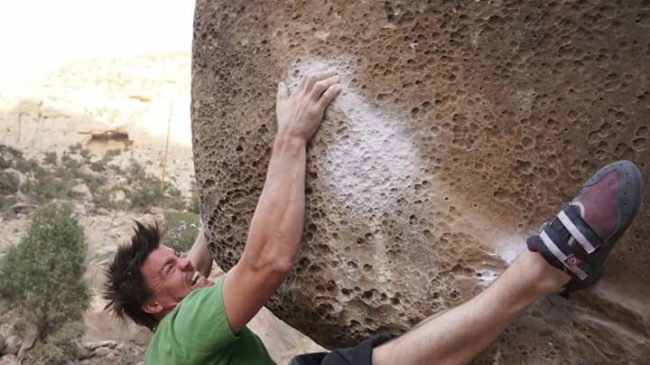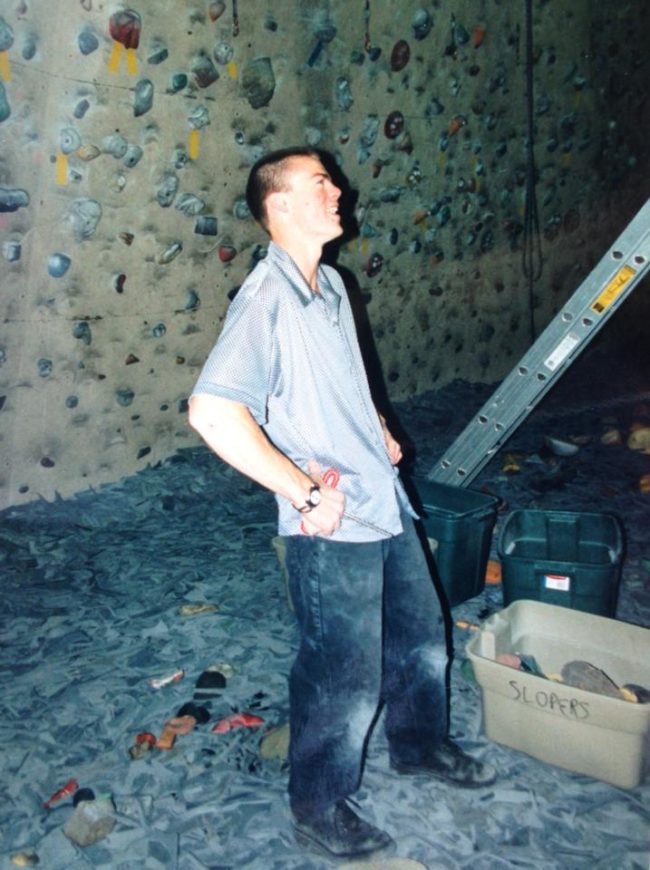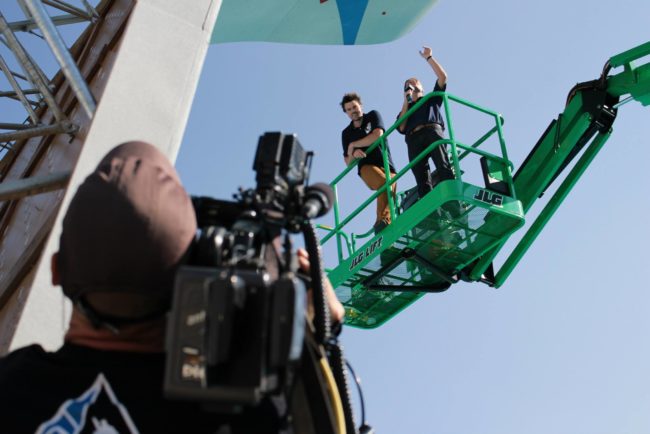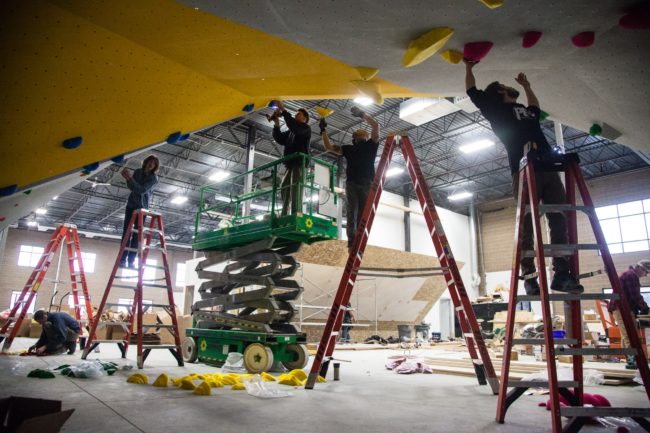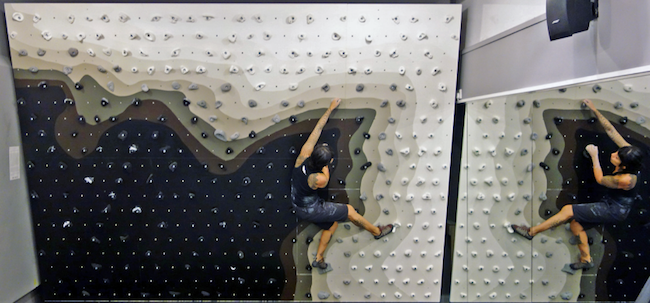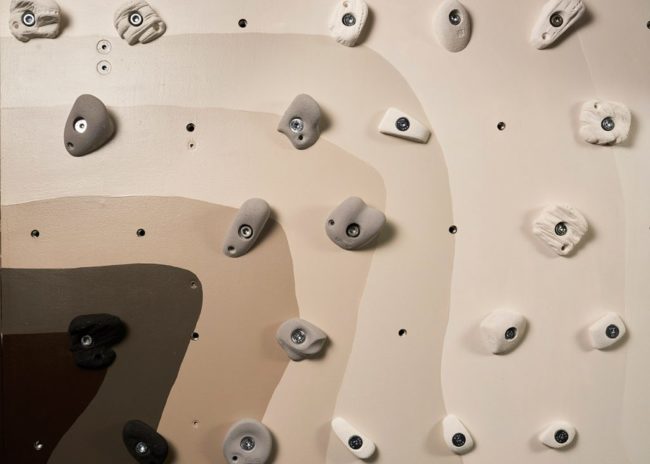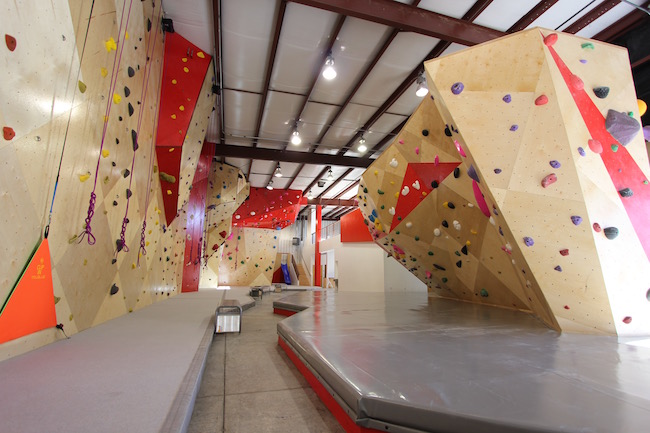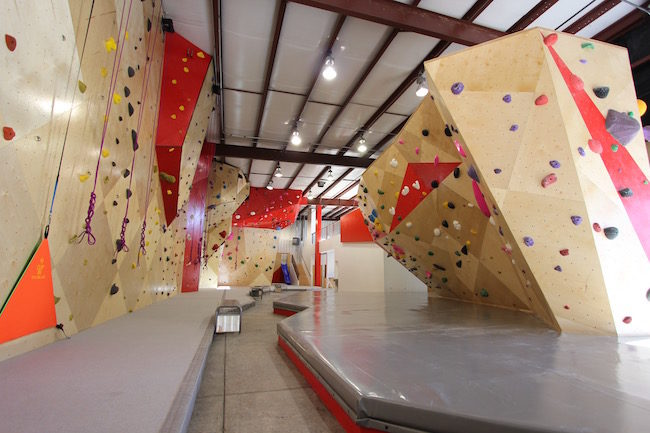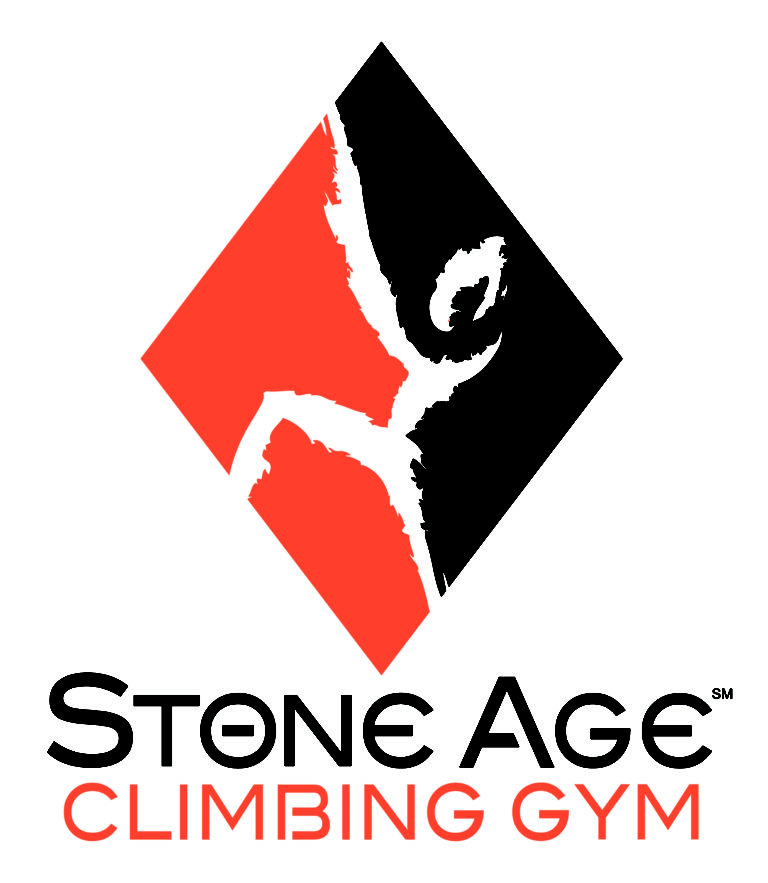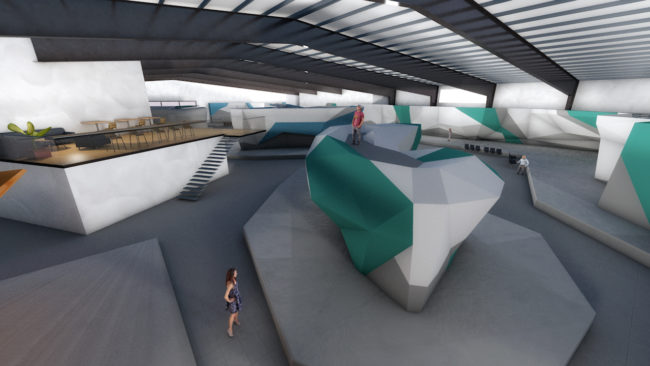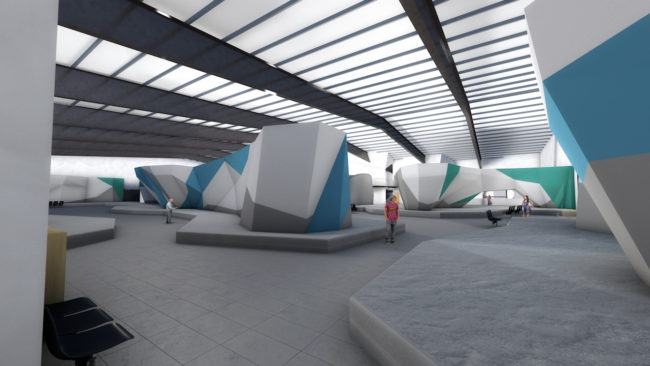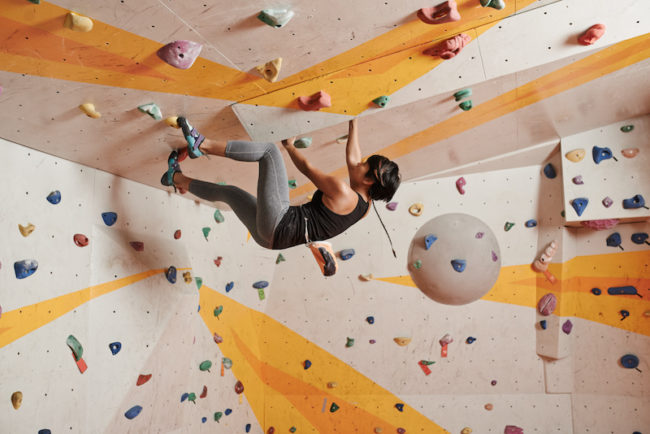
In four years, Adam Ondra could be on television with Usain Bolt and Michael Phelps.
It is no secret the climbing industry is growing (13% projected growth rate this year), and with the inclusion of Sport Climbing in the Tokyo 2020 Olympics that progress should only continue. As the industry expands and competitors morph into large, full-service facilities, gym owners are feeling the pressure to find solutions that both maintain relationships with members and generate new business.
So how do climbing gyms with limited resources market themselves like the big boys?
Step 1: Become a Professor
“To market well, you must have a personalized conversation, and to have a personalized conversation you must understand your audience,” says Clay Chaszeyka, President of HARNESS Consulting.
HARNESS is a marketing company that specializes in creative, data-driven solutions for the outdoor recreation industry. Since many employees in the company are climbers as well, HARNESS focuses especially on the climbing side of the industry. In order to better understand the audience of his climbing gym clients, Chaszeyka conducted a study concerning the characteristics of climbing gym visitors. After pooling research from multiple reliable sources, including interviews with gym owners and market research reports such as Ibis, Chaszekya’s results revealed a somewhat surprising distribution of climbing gym clientele.
Despite the common interpretation of climbing as a niche sport, on average only 20 percent of climbing gym visitors are core climbers, or people familiar with the climbing culture who would find a way to climb regardless of where they live. The remaining 80 percent of consumers are new climbers, or people who wouldn’t consider themselves climbers but instead happen to climb and may not continue to do so.
Based on anecdotal evidence, new climbers generally fall into one of two categories:
- Fitness-minded adults, or visitors who often already hold a membership to a traditional gym, CrossFit gym, yoga studio or the like;
- Youth, or consumers who often are less inclined to participate in more traditional team sports and instead enjoy the individual goals and non-rival social space that climbing gyms and teams can offer.
Granted, this distribution will vary based on location (higher percentage of core climbers in mountain towns, for instance), but the many gyms with a similar distribution must accept an important truth:
“Like it or not, you are in the business of education,” says Chaszeyka. “Guests will look to you to be an authority on climbing and to present resources that will help them dive into their newly acquired climbing hobby or lifestyle.”
Step 2: Set Up the Projector
Having a personalized conversation with 8 new climbers per day is simple, but doing the same for 80 or eventually 800 guests will prove challenging for expanding gyms with limited resources. In addition to offering regular instructional classes for new climbers, Chaszeyka recommends incorporating automated workflows as a marketing practice, which requires far less human capital and reaches a far greater audience.
In their simplest form, automated workflows are email equations. A producer arranges a series of emails and consumers enter into a particular series based on their engagement (clicks) with previous emails, activity in the gym (products purchased), and website activity (pages viewed). All that is left for producers to do is set-up the equation. In the case of climbing gyms, that will mean arranging sets of email series which educate fitness-minded adults and youth (or the parents of youth).
While some climbing gyms may shy away from email marketing because of historically low click-through rates, Chaszeyka has found such to be successful when videos are included.
“Businesses sell up to 144% more with video,” says Chaszeyka. “According to Forbes and Entrepreneur, video marketing will continue to be the most critical part of any marketing strategy for the years 2016-2021.”
Before becoming a marketing specialist for outdoor companies, Chaszeyka was involved in the film industry. He eventually shifted towards his greater passion for the outdoors, but the skills never left him. Video marketing campaigns form the bedrock of HARNESS’ work, and their results suggest the foundation is sturdy. On average, the clients of HARNESS see 10-13 percent click-through rates on their video emails, well above the accepted industry average of 1-2 percent.
So why are automated workflows with videos so successful?
Step 3: Start the Slideshow
“Climbing is intimidating,” says Chaszeyka. “Most people are not going to keep doing it unless they feel comfortable doing it, and they are not going to feel comfortable doing it unless an expert shows them how in a safe space. You have to give away your secrets. You have to teach them the basics.”
An example of Harness’ instructional videos: Origin Climbing & Fitness staff explain the physical and mental benefits of climbing, available to everyone.
For many new climbers, their first experience will be mixed with frustrations and confusion. Most will not be interested in paying for instruction at the beginning, and certainly not for classes which take place in the same room as core climbers. Video emails enable new climbers to learn the basics in the confines of their own home. They can learn to keep their arms straight and focus on their feet, instead of focusing on core climbers and bending their credit cards. Before stepping into the gym a second time, climbing instantly becomes less intimidating and more intriguing.
“People don’t care in most cases if you are just selling them something. Our automated workflows are about empowerment. It’s the right information to the right people at the right time.”
Step 4: Play the Right Slideshow
To put the right videos in front of the right new climbers at the right time, you have to be able to measure what works and what doesn’t. All too often, marketing companies boast of sophisticated practices but lack the means for clients to assess the effectiveness of such after the fact. That is why HARNESS connects the results of their automated workflows with Rock Gym Pro (RGP), perhaps the most popular software used by climbing gyms to manage point of sales.
Before any climbers receive emails, HARNESS exports contacts from RGP into an automated workflow software. Once the email series are launched, and a new climber clicks on an email, they are essentially attaching a flag to that specific email series. HARNESS’ clients can then review click-through rates to edit unsuccessful email series and continue successful ones, as well as look back into RGP to see if readers have made subsequent purchases in RGP. The most advanced automation software even reveals names of individuals and their interactions!
What this means for climbing gyms is that they can finally track conversion. Whereas it may be impossible or too expensive to control for external variables when analyzing the results of more traditional marketing campaigns, the clients of HARNESS can see a direct connection between their investment in video emails and sales outcomes. When using software which retains consumer names, climbing gyms can even improve relationships with specific climbers before they re-enter the gym!
“We are about empowering new climbers, but we are even more about empowering climbing gyms,” concludes Chaszeyka. “Our digital and analytical methods enable small-to-medium sized climbing gyms to effectively build one-on-one relationships with new climbers. You can’t buy that with a billboard.”
If you are interested in stepping up your digital game to grow your gym, be sure to check out HARNESS’ email series Four Tips to Help Grow Your Gym, or send an email to sales@harnessconsulting.com.
This story was paid for and produced by the sponsor and does not necessarily represent the views of the Climbing Business Journal editorial team.




